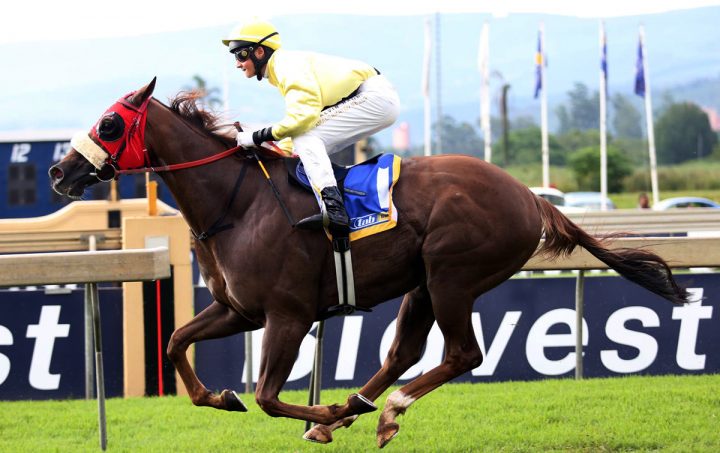The recent successful appeal by Summerveld trainer James Goodman against a National Horseracing Authority (NHA) ruling revealed the high-handed demeanour of one of the NHA’s office bearers at the time of the ruling and the lack of attention to protocol by the latter.
However, the new leader of the NHA, Lyndon Barends, has already made a lot of effort to build bridges between everybody in the racing industry and rather than viewing the NHA as merely the policemen, whose role is to maintain the integrity of the sport, he views the authority as the head of the racing family.
In his “Vision 2020” strategy, Barends aims to transform the NHA over the next four years.
He has identified five objectives of the NHA in Southern Africa in its identified territories.
They are:
- To regulate the Sport Of Horseracing
- To govern the Sport with integrity.
- To serve the industry through excellent, efficient and effective administration of amongst others, the Stud Book, registrations, licensing, race day services and laboratory services.
- To promote and/or encourage the promotion of the Sport Of Horseracing, the quality of the Thoroughbred, industry training and skills development.
- To promote and foster co-operation and goodwill with recognised authorities, Governments and local and International Stakeholders.
Goodman won a high court appeal last week relating to a horse of his, Aldric, who won on October 10, 2014. Aldric was later tested positive for caffeine, which led to a fine of R80,000. Goodman was also ordered to pay R45,000 to the NHA for costs incurred.
The judge agreed with Goodman that NHA attorney Jonathan Witts-Hewinson should have recused himself from the inquiry into the Aldric case. Witts-Hewinson had indeed been asked by Goodman’s legal representative at the time, Robert Bloomberg, to recuse himself, because at the time of chairing the Aldric inquiry he was not only a National Board Director of the NHA, but was also a panel member of both the Inquiry Review Board and Appeal Board and also sat on a legal sub-committee of the NHA. He was also a former NHA Chairman. However, Witts-Hewinson refused Bloomberg’s request.
Goodman’s legal representatives in the High Court case, Shepstone & Wylie, made a submission highlighting the principle that a man may not be a judge in his own cause or judge of the cause of somebody he is partial to. Had this principle been adhered to, Witts-Hewinson would have automatically been disqualified from the inquiry.
The judge also found the proceedings conducted by Witts-Hewinson to be “manifestly procedurally unfair” and to have “no structure whatsoever”. Furthermore, Goodman’s expert witness, Professor Tobin, “testified he was denied the opportunity of questioning the specialist chemist (Schalk De Kock) employed by the NHA”.
The judge set aside the guilty verdict and both fines and ordered the NHA to pay the costs of the application.
South Africa’s most recognised international trainer Mike de Kock wrote a blog after the case headed, “All we want is fairness.”
De Kock emphasised the ignorance of the general racing public regarding “positives” and believed this had its roots in “bad media reports that emanate from respective racing authorities who are all too eager to make themselves look good and to justify their existence at the expense of the reputation of trainers and jockeys and, ultimately, at the expense of the industry.”
Indeed, the general racing public do not have the knowledge to differentiate between therapeutic medicine and “dope” or, in the case of the former, to differentiate between irrelevant traces and levels that are having a pharmacological effect.
The public invariably believe a positive to be a deliberate attempt by the trainer to cheat by “doping” a horse.
In actual fact most regulatory bodies these days distinguish between the control of illicit substances (doping control) from the control of therapeutic substances (medication control). For doping drugs, the objective is to detect any trace of drug exposure using the most powerful analytical methods. However, this “zero tolerance rule” is not suitable for the control of therapeutic substances because the sophisticated screening methods these days would be able to find traces of a therapeutic medication long after it had been administered and long after it was having any pharmacological effect. Therefore HCL (Harmonised Screening Limits) are decided upon by the regulatory bodies for therapeutic medications. Trainers and veterinarians are advised of “detection times”, or the time it would take for the therapeutic medicine to withdraw to a level below the screening limit.
Most positives appear to emanate from a mistake being made by either the veterinarian in the dosage of a therapeutic substance administered or negligence by the trainer and/or veterinarian in adhering to the detection time. In Goodman’s case, a caffeine positive is often the result of feed contamination.
However, what has most irked De Kock in recent times was the perception by trainers that “all the NHA has to do is to prove that the accused party is the trainer of the horse in which a positive sample was found. By virtue of the fact that he or she is a licensed trainer, such trainer is guilty. Period.”
Barends’ Vision 2020 makes the following statements among others, “By our nature we will be separate from our Stakeholders, but we will seek to understand their environment and take cognisance thereof as we govern. We will serve, support and promote Horseracing and the wellbeing of the horses and the people with integrity, responsiveness, excellence and dedication. We recognise that we are part of a passionate, loyal and committed horseracing fraternity. In all our efforts we will endeavour to enlarge this family to include those who have never been exposed to the pleasures of the sport.”
Hopefully, Goodman’s determination to seek justice and succeed therein will be a watershed moment in the racing industry and will spell the end of the high-handedness Mike de Kock talks about.
By David Thiselton





